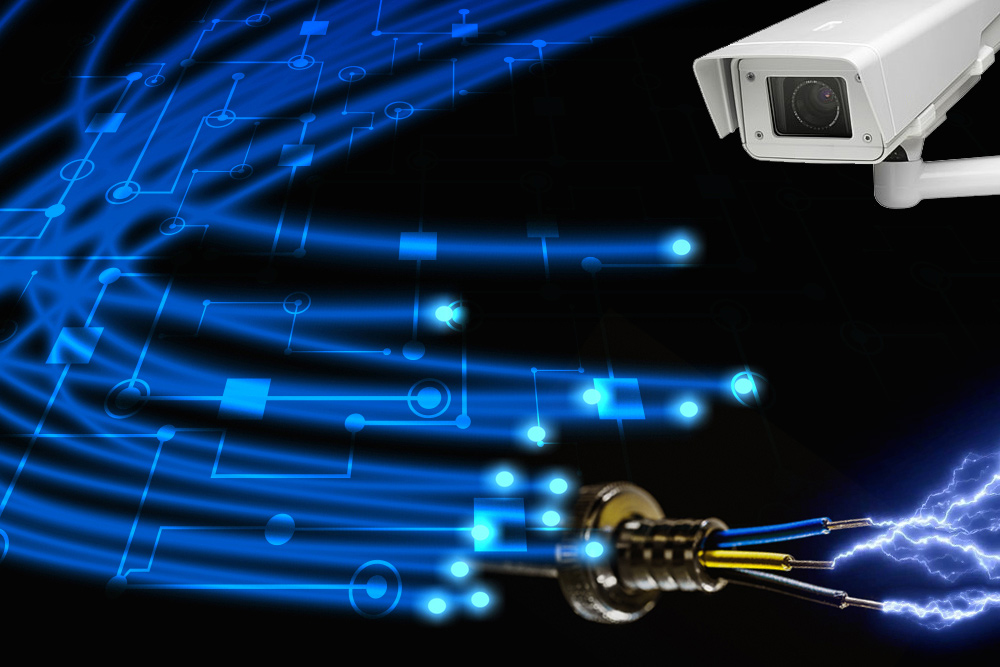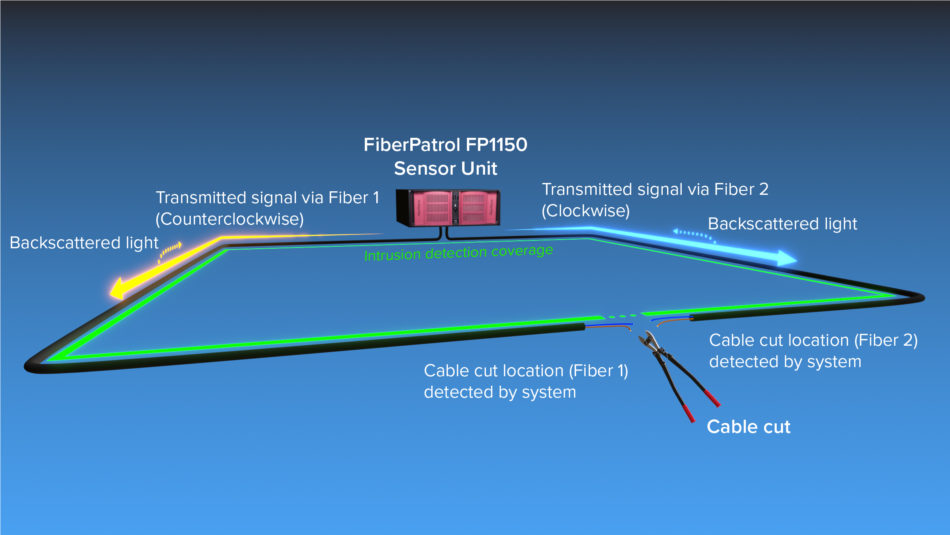Enhance Your Safety And Security With Advanced Fiber Optic Safety And Security Equipments
In an age where security is critical, sophisticated fiber optic safety and security systems provide a compelling option for enhancing safety and security across various environments. What implications do these developments hold for future safety and security steps?
Advantages of Fiber Optic Security
Using the advantages of fiber optic technology significantly enhances security systems across numerous applications. Among the main benefits is the enhanced bandwidth capacity, enabling for the transmission of huge amounts of data at broadband. This is particularly vital for real-time video surveillance, where high-resolution feeds can be sent without latency, guaranteeing instant reaction capabilities.
In addition, optical fiber display superior resistance to electromagnetic disturbance, which is crucial in atmospheres with possible signal disturbances. This dependability ensures regular efficiency in critical protection operations. Fiber optic cables are less vulnerable to tapping and unapproved accessibility compared to typical copper electrical wiring, thereby improving information stability and discretion.
Another significant advantage is the toughness of fiber optic systems; they are much more immune to ecological elements such as dampness, temperature level changes, and harsh compounds. This resilience converts to lower maintenance expenses and longer life-spans for safety and security installments.
Finally, the light-weight nature of fiber optic cable televisions promotes easier setup and directing, specifically in complex facilities (fiber optic security system). Inevitably, the assimilation of fiber optic technology into safety systems not just strengthens defense measures but likewise enhances functional performance
Trick Attributes to Consider
When assessing fiber optic security systems, numerous key functions need to be taken into consideration to make certain optimum efficiency and effectiveness. First, evaluate the system's detection range and sensitivity; a substantial variety enables checking large locations, while high level of sensitivity makes certain that also minor disturbances are discovered quickly.
Following, think about the integration capacities of the system. A fiber optic protection system must perfectly interface with existing protection actions such as cams and alarms, developing a cohesive security network.
Durability and ecological resistance are also critical attributes. Make sure that the system is designed to hold up against extreme climate condition and potential physical dangers, as this will lengthen its operational life-span.

Last but not least, check out the scalability of the system. A durable fiber optic safety system ought to be easily expandable to suit future needs without substantial overhauls. By very carefully considering these attributes, you can choose a fiber optic safety and security solution that improves safety and safety in your environment.
Installment Process Introduction
To successfully implement a fiber optic safety system, an organized installation procedure is necessary. This process starts with a detailed site evaluation to identify the specific safety demands and to identify ideal areas for fiber optic cables and safety tools. Following this assessment, the setup group will certainly develop an in-depth strategy, including wire pathways, required devices, and conformity with local policies.
Next, the setup involves laying the fiber optic cords, guaranteeing they are shielded from environmental elements and physical damage. Appropriate handling strategies are critical, as fiber optic cable televisions are delicate and can be quickly harmed. After the cabling is mounted, adapters and discontinuations are meticulously completed content to ensure signal stability.
The succeeding phase contains mounting protection gadgets such as video cameras, movement detectors, and alarm systems, all incorporated with the fiber optic network. Extensive testing is performed to confirm that all components are operating appropriately and to make sure optimal efficiency.

Contrasting Fiber Optic to Typical Solutions
The development of safety innovation has led to substantial improvements in the comparison between fiber optic systems and conventional copper-based systems. Fiber optic systems utilize light to send data, providing superior data transfer and speed contrasted to their copper equivalents. This leads to enhanced information transmission abilities, making fiber optics excellent for high-resolution video security and real-time surveillance.
Furthermore, fiber optic cables are immune to electromagnetic disturbance, minimizing the chance of signal destruction triggered by outside aspects. This characteristic makes certain constant efficiency, even in tough environments. In comparison, standard copper systems are a lot more vulnerable to disturbance, leading to possible vulnerabilities in security applications.
Toughness is another advantage of fiber optic systems. They are less prone to harm from ecological elements such as moisture and temperature level changes, which can endanger copper wiring. Moreover, optical fiber are lighter and thinner, permitting less complicated installation and decreased physical footprint.
Nevertheless, typical systems tend to have lower first costs, making them appealing for budget-conscious tasks. While fiber optic systems might require a higher in advance financial investment, their long-term advantages-- such as reduced upkeep expenses and greater integrity-- usually exceed the first expense, positioning them as look what i found an exceptional option for modern-day protection needs.
Future Trends in Safety And Security Innovation
Arising fads in protection modern technology are positioned to change the landscape of security and risk discovery - fiber optic security system. As organizations progressively deal with advanced risks, technologies such as fabricated intelligence (AI) and artificial intelligence (ML) are ending up being important to safety systems. These innovations enhance the capability read here of fiber optic systems by making it possible for real-time data analysis, identifying anomalies, and automating feedbacks to possible violations
Furthermore, the integration of the Internet of Points (IoT) is changing safety and security frameworks. IoT tools can give detailed situational understanding and facilitate smooth communication in between different security components. This interconnectedness allows for more reliable tracking and faster event response times.
Biometric verification is likewise gaining energy, supplying a higher degree of safety through one-of-a-kind physical attributes. As this innovation progresses, it is likely to be included into fiber optic systems for boosted accessibility control.
Verdict
Finally, progressed fiber optic safety systems represent a substantial improvement in safety and monitoring technology. Their remarkable bandwidth, resistance to interference, and resilience promote trusted surveillance and data stability. As these systems incorporate AI and IoT capabilities, they improve the total safety and security structure, ensuring robust defense for assets. The shift from typical systems to fiber optic services shows an expanding fad towards a lot more reliable and effective security actions in an increasingly complicated technical landscape.